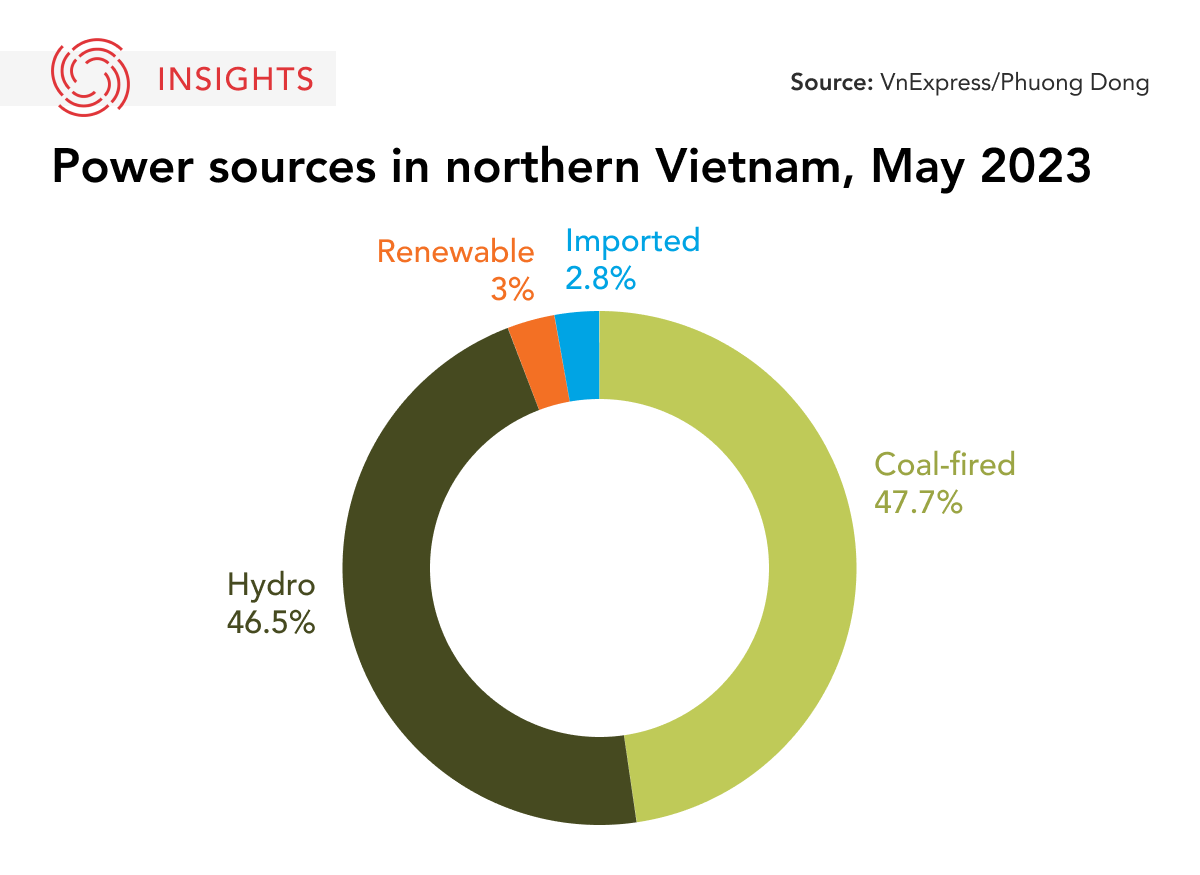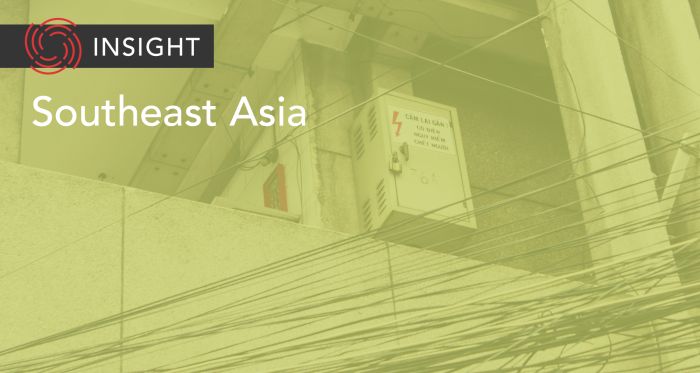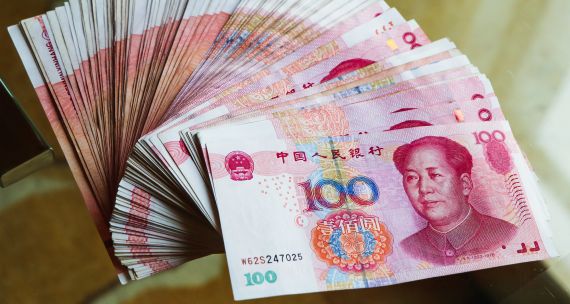The Takeaway
A record-breaking heat wave and an unprecedented drought, combined with consistent, high demand for electricity, have plunged the northern region of Vietnam into darkness. Businesses, particularly manufacturing and logistics companies, are being impacted by operation halts caused by power shortages. The resulting financial loss and lack of early warnings for power outages are prompting investors to consider moving production out of northern Vietnam.
In Brief
Northern Vietnam’s power is mainly supplied from hydropower (43%) and coal (48%). High temperatures and a severe drought, dating back to early May, have dried up the reservoirs of hydropower plants. On June 8, the country’s Ministry of Industry and Trade reported that, due to "below-optimal" operating water levels, 11 hydropower plants, including Son La, the largest hydropower plant in Vietnam, had shut down. The sudden closure removed 5,000 megawatts from the grid, which is enough energy to power two million homes for a year.

Reduced hydropower generation, coal shortages, operational issues in thermal power plants, and soaring power demand have resulted in a shortfall of 30.9-50.8 million kilowatt-hours a day. The dire situation has forced state-owned electric company Vietnam Electricity (EVN) to resort to power cuts, sometimes without warning, to residences and businesses. EVN has also started importing coal from Australia, Indonesia, Laos, and South Africa to resolve coal shortages and increase power generation from thermal power plants. EVN has warned that intense power shortages could last until July.
Implications
Long stretches of unannounced or short-notice power cuts are hurting businesses, manufacturing units, shipping and logistics, labourers, and residents in several areas of northern Vietnam, including Bac Ninh, Hai Phong, Hanoi, and Quang Ninh. Northern Vietnam is one of the four major economic regions in the country, accounting for more than 32 per cent of national GDP and 26 per cent of total foreign direct investment capital in the country. The region is increasingly becoming a critical part of the global supply chain of multinational companies, such as Apple, Foxconn, and Samsung, that have set up shop there.
EVN asked major industrial parks and factories to lower energy consumption by half and cease operations between 5 p.m. and 7:45 a.m. local time. These power cuts, extending as long as 26 hours on one occasion, have curtailed production and cost businesses tens of thousands of dollars. Top foreign investors with operations in this part of the country — such as Japan and South Korea, as well as various European chambers of commerce in Vietnam — have expressed grave concerns and have urged the government to quickly resolve the energy crisis. The Japanese Chamber of Commerce and Industry in Hanoi warned the government that some of its members could shift production out of Vietnam.
Tourism in Hanoi and Ha Long Bay have also been hit hard. Foreign tourists are fleeing as persistent high heat and power outages in hotels force them away. Power usage for public lighting systems — including lights in parks and on roads in Hanoi — has also been reduced by 25 per cent to save power. And some residents are now flocking to malls for respite from the blackouts, and even to nearby caves for cooler air.
These intense dry-season droughts are becoming more frequent in Vietnam, in the process hampering hydropower as a reliable source of power. To cope with the hydropower shortage, Vietnam is increasingly relying on coal-fired thermal power. This does not bode well for Vietnam’s rapidly growing economy and its commitment to phase out coal from power generation by 2050. To achieve its net-zero emissions by 2050, Vietnam seeks to generate 70 per cent of its electricity from renewable energy by 2050 through its recent National Power Development Plan VIII. Concerns related to renewable energy investments among National Assembly members may delay that transition.
What's Next
- EVN investigation continues
On June 14, EVN suspended the director of the National Load Dispatch Center, which operates under EVN and is responsible for the secure and continuous supply of electricity and the stable operation of the national power system. The Ministry of Industry and Trade launched a probe into EVN on June 10, regarding its power supply and management between January 2021 and June 2023. The probe is ongoing.
- Canada-Vietnam renewable energy partnership
On June 14, Ambassador Dang Hoang Giang, Vietnam’s Permanent Representative to the United Nations, met with Canadian Ambassador for Climate Change Catherine Stewart and expressed Vietnam’s interest in collaborating with Canada on renewable energy development. This year marks the 50th anniversary of Canada and Vietnam’s establishment of diplomatic ties. Vietnam is Canada’s largest trading partner in the ASEAN bloc and under Canada’s Indo-Pacific Strategy, bilateral ties are expected to further strengthen. Clean technology is also one of the priority sectors in Vietnam for Canadian commercial interests.
• Produced by CAST's Southeast Asia team: Stephanie Lee (Program Manager); Alberto Iskandar (Analyst); and Saima Islam (Analyst).




